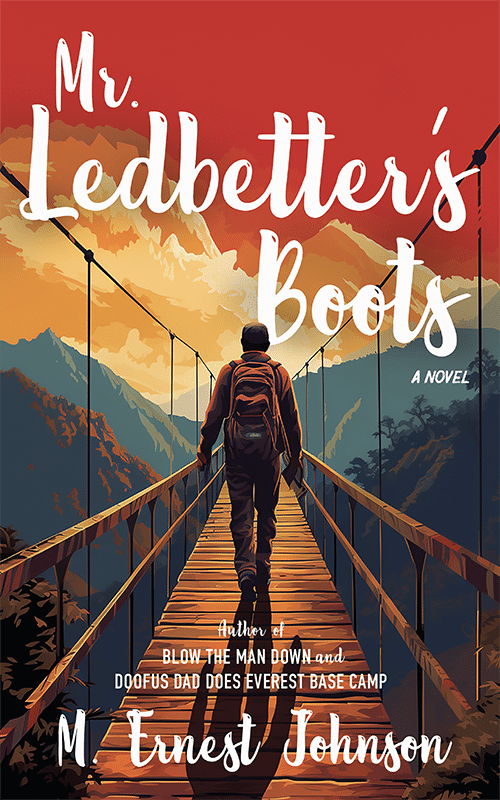When embarking on a high-altitude trek, you’ll hear the same advice over and over from those in the know:
“Drink plenty of water!”
And while that’s solid guidance, it’s a bit like advising someone to make bread using only flour — sure, it’s a key ingredient, but without yeast, salt, and water, you’ll end up with an inedible lump of nothing.”
(I speak from experience; I’ve made several inedible lumps of nothing in my time. Just ask my long-suffering children.)
Hydration at altitude isn’t just about guzzling liters of water as quickly as possible (which nobody wants to do, anyway). If you don’t maintain the right balance of fluids, electrolytes, and nutrients, you might find yourself as dry and drained as if you hadn’t had anything to drink at all. Even worse, you could be at increased risk for altitude sickness.
So, let’s break down the science of staying hydrated at altitude and why simply chugging H2O alone won’t cut it.
Altitude Dehydrates You Faster—And It’s Not Just From Sweating
At high elevations, the air is colder, drier, and thinner, making your body lose water at an alarming rate. The problem? You don’t even realize it’s happening.
For starters, you breathe faster to compensate for lower oxygen levels, which means you’re exhaling more moisture. Fun fact: At 10,000 feet (3,048m), you lose twice as much water through respiration as you would at sea level. So basically, you’re panting like an overheated Saint Bernard, but instead of drool, you’re losing valuable hydration.
Then there’s altitude diuresis, which is fancy code for “you’ll be peeing a lot.” Your body, in its infinite wisdom, decides to get rid of extra fluid to adjust to high altitude. Add in the low humidity and the fact that sweat evaporates instantly (so you don’t even notice it happening), and you’ve got a recipe for silent dehydration.
A study in High Altitude Medicine & Biology found that trekkers at 14,000 feet (4,267m) lost between one and two liters of water per day just through respiration. That’s right — you’re drying out just by existing.
Why Water Alone Isn’t Enough (And Could Actually Make Things Worse)
Yes, you need water. No, you don’t need to drink it like it’s a fraternity hazing ritual. Overhydrating without replenishing electrolytes can lead to hyponatremia, which can then result in something referred to as dilutional stupidity. (I’m not making that up.) This delightfully named condition occurs when you flush too much sodium out of your system, leaving you lightheaded, nauseous, and feeling … well … stupid.
Symptoms of hyponatremia include fatigue, confusion, muscle cramps, and a headache that won’t go away — conveniently identical to altitude sickness, making it even harder to tell what’s going wrong. A study in Wilderness & Environmental Medicine found that trekkers who over-hydrated without replacing electrolytes had a higher risk of altitude sickness. So, yes, hydration is important, but so is hydration with a brain.
Electrolytes like sodium, potassium, and magnesium are crucial because they regulate muscle function, nerve signaling, and fluid balance. At altitude, you lose these little buggers super quick. Sodium prevents cramps and keeps your body hydrated, potassium helps muscles recover, and magnesium supports energy production. In short, your body at altitude is like a high-maintenance houseplant that needs more than just water to survive.
Pro tip: Add an electrolyte tablet or powder (like Nuun, LMNT, or DripDrop) to your water at least once a day. If you forget, don’t be surprised when you feel like an overcooked noodle halfway up the mountain.
Dehydration vs. Altitude Sickness: The Annoyingly Similar Symptoms
Here’s where things get tricky — dehydration and altitude sickness often look exactly the same. Headaches, nausea, dizziness, and fatigue can be signs of either.
If you feel lousy, start by drinking water with electrolytes, eating something salty, and taking deep, slow breaths. If that doesn’t help, you might be dealing with altitude sickness, and descending is your best option. A 2018 study in Frontiers in Physiology found that even mild dehydration increased the risk of altitude sickness by 36%. Moral of the story? Don’t let your body turn into a raisin.
How Much Water Do You Actually Need?
The general rule for trekking at altitude is to drink 3-4 liters of water per day above 10,000 feet (3,048m). For every additional 3,000 feet (914m) of elevation gain, add another liter. And before you ask — yes, this means you’ll be peeing more than a nervous, elderly chihuahua. Deal with it. Just go behind that big rock over there.
The key is to sip consistently rather than chugging a liter at a time. Drink before you feel thirsty, because thirst is a late signal that dehydration is already happening. A good indicator is your urine color — light yellow is great, dark yellow means you’re falling behind, and if it looks like iced tea, you should be concerned.
Research from the Journal of Sports Sciences found that proper hydration increases endurance by 15-20% on multi-day hikes. Translation? Drink smart, hike strong.
The Best and Worst Drinks for Hydration at Altitude
Some drinks will help you thrive, while others will likely turn you into a wheezing mess.
Great choices: Electrolyte drinks like Nuun, LMNT, and DripDrop provide the sodium and potassium your body craves. Coconut water is a natural alternative, but it’s low in sodium, so adding a pinch of salt isn’t a bad idea. Herbal teas like ginger or peppermint can help digestion and keep you warm, while diluted fruit juices provide a quick energy boost.
Terrible choices: Too much coffee might feel like an inaleniable human right, but unfortunately, it’s a mild diuretic and can exasperate dehydration. Alcohol is even worse — it impairs acclimatization and dehydrates you even more. And those sugary sports drinks? They might look appealing, but they’ll spike your energy and will probably result in a crash later.
Final Thoughts: Hydration is More Than Just Water
Staying hydrated at altitude is not just about drinking water — it’s about keeping your body balanced. By combining water intake with electrolytes, staying ahead of dehydration, and avoiding the hydration pitfalls of altitude, you’ll feel better, perform better, and — most importantly — reduce your risk of altitude sickness.
So remember: sip consistently, supplement with electrolytes, don’t overdo it, and if your pee looks like a fine whiskey, it’s time to rethink your hydration game. (But since you just read this article, I’m sure that’ll never happen.)
Ready to put your hydration strategy to the test? Join one of our expert-led high-altitude adventures and see for yourself. You’ve got this!





Recent Comments